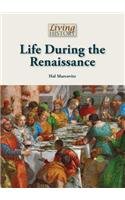-
Art Conservation
Hal Marcovitz
Library Binding (Lucent Books, Nov. 8, 2006)Describes the history of art conservation, explains the techniques used to restore artwork, and discusses the difficulties involved in restoring, conserving, and maintaining fragile pieces. U
U
-
Exposing Torture: Centuries of Cruelty
Hal Marcovitz
Library Binding (Twenty-First Century Books, Jan. 1, 2015)Torture. According to Henry Shue, professor of politics and international relations at the University of Oxford in England, "No other practice except slavery is so universally condemned in law and human convention. Yet, unlike slavery…torture is widespread and growing." Why is torture so common? Is it an unavoidable component of human psychology? Exposing Torture tackles these complex questions, delving into the history of torture around the world, from the flayings, burnings, and other methods of torture in ancient societies to the humiliating forms of psychological and sexual torture of the twenty-first century. But is torture an effective means of controlling human behavior? Can it help root out information about terrorism and prevent loss of human life? Over the centuries, many people have supported the point of view that it can, while others vehemently disagree. In this book, readers will examine the ethical and moral dilemmas of torture, while learning more about the international efforts to ensure the humanitarian treatment of individuals in a variety of circumstances. Exposing Torture also delves into the system of international courts and tribunals that work to bring known torturers to trial. Readers will hear from victims of torture who not only survived but sought justice and founded organizations to help other victims. After reading this in-depth examination, readers will be able to make a persuasive argument to answer the question: Is torture ever acceptable?
-
Statue of Liberty: A Beacon of Welcome and Hope
Hal Marcovitz
eBook (Mason Crest, Nov. 25, 2014)The Statue of Liberty was given to the United States as a gift from the people of France in 1886. It was originally meant as an emblem of the friendship between the two nations, but over the years it has come to mean much more. The Statue of Liberty has come to represent the promise of America—a promise that drew tens of millions of immigrants from other countries, seeking greater freedom and opportunities. For many of these immigrants, Lady Liberty was the first thing they saw when they arrived in the United States. The Statue of Liberty has also served as a symbol of freedom for those who are oppressed throughout the world.
-
Life During the Renaissance
Hal Marcovitz
Hardcover (Referencepoint Pr Inc, Aug. 1, 2015)Discusses what life would have been like for different people during the Renaissance, including the patricians and nobles, the middle class, and the lower class.
-
Ellis Island: The Story of a Gateway to America
Hal Marcovitz
language (Mason Crest, Nov. 17, 2014)Between 1892 and 1954, more than 12 million immigrants entered the United States through the Ellis Island processing station in New York harbor. To these immigrants, Ellis Island was a symbol of the American dream—once they passed through its gates, they could start a new life with opportunities that were not available to them in their countries of origin. Today, roughly one-third of our country's population is descended from those who were processed at Ellis Island, and the facility is now a museum dedicated to American immigration.
-
Hate Crimes
Hal Marcovitz
Hardcover (Referencepoint Pr Inc, Aug. 1, 2018)Crimes committed against people because of their race, ethnicity, or religion have become common in the United States and other countriesin 2016, the FBI said more than six thousand such crimes were committed in America. Hate crimes can range from small acts of vandalism to horrific mass shootings, such as the 2015 murders of nine African Americans attending church services in Charleston, South Carolina. Although many laws have been written to prevent hate crimes, experts agree such offenses will never go away as long as people harbor prejudices against others.
-
Uncle Sam: International Symbol of America
Hal Marcovitz
language (Mason Crest, Nov. 17, 2014)It is said that the inspiration for the character of Uncle Sam was a man named Sam Wilson, who provided food for the U.S. Army during the War of 1812. By the 1830s, the figure of Uncle Sam had become a personified image of America, commonly used by newspaper and magazine cartoonists to represent the U.S. government's decisions and policies. Perhaps the best-known image of Uncle Sam was created in 1917, during the First World War—a stern, white-haired man wearing star-spangled clothing, encouraging Americans to do their part to support their nation. Uncle Sam remains an important symbol of the United States and the policies and activities of our government.
-
Should the Drinking Age Be Lowered?
Hal Marcovitz
Library Binding (Referencepoint Press, Jan. 15, 2011)The In Controversy series examines the complex, controversial issues of the day by breaking them into smaller pieces. By studying a specific issue, for example the ethics of embryonic stem cell research, rather than the entire stem cell research debate, students gain a more solid and focused understanding of a topic as a whole. Each book in the series provides a clear, insightful discussion of the issues, integrating facts and a variety of contrasting opinions for a solid, balanced perspective. Personal accounts and direct quotes from academic and professional experts, advocacy groups, politicians, and others enhance the narrative.
-
The Art of Graffiti
Hal Marcovitz
Hardcover (Referencepoint Press, Aug. 1, 2019)Graffiti is largely illegal in most American communities, but that hasnt stopped street artists from rendering large and very public demonstrations of exquisite art. Some graffiti artists, among them Shepard Fairey, Jim Clay Harper, Danielle Bremner, and the mysterious British artist Banksy have become world famous. The Art of Graffiti discusses what todays artists are doing, how they attract a following, and what they are saying through their artwork. R
R
-
Dictatorships
Hal Marcovitz
language (ABDO, March 6, 2019)Exploring World Governments identifies and explains different types of governments. Each book examines the social, political, religious, and cultural effects within each governmental structure’s confines as well as its impact on neighboring nations and the global community. Chapters discuss typical economic arrangements within each typeof government and how economic theories and political practice are interwoven in defining how a government operates and serves its people. Exploring World Governments identifies and explains different types of governments. Each book examines the social, political, religious, and cultural effects within each governmental structure’s confines as well as its impact on neighboring nations and the global community. Chapters discuss typical economic arrangements within each typeof government and how economic theories and political practice are interwoven in defining how a government operates and serves its people. Exploring World Governments is a series in Essential Library, an imprint of ABDO Publishing Company.
-
Teens & Sex
Hal Marcovitz
eBook (Mason Crest, Sept. 2, 2014)The teenage pregnancy rate has dropped in recent years, yet each year more than 320,000 teen girls in the United States give birth. This volume examines the changing attitudes of teenagers toward contraception, abstinence, sexually transmitted diseases, media influences, and other issues involving young people and sex.
-
The White House: The Home of the U.S. President
Hal Marcovitz
language (Mason Crest, Nov. 17, 2014)For more than 200 years, U.S. presidents have lived and worked in the executive mansion at 1600 Pennsylvania Avenue in Washington, D.C.—commonly known as the White House. The executive mansion received its nickname in 1798, when its stone exterior was painted white to seal it from moisture and prevent cracking. As the official home of the president, the White House has come to symbolize the power and authority of the U.S. government. Within its walls, decisions are made that affect the lives of all Americans and, very often, the lives of millions of people around the world. Today, many people view the White House as a symbol of leadership and democracy.